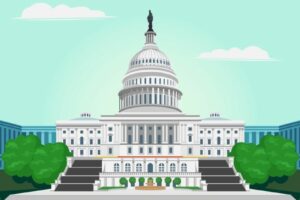In a country as vast and diverse as the United States, effective governance hinges on the collaboration between local, state, and federal governments. Shared governance is a dynamic system where these three levels work together to create policies that address the unique needs of communities while maintaining national cohesion. This intricate balance ensures that while local governments handle community-specific issues, state and federal authorities provide the necessary oversight and resources.
Understanding the interplay between these governmental layers is crucial for grasping how policies are crafted and implemented. Each level brings its own strengths and challenges, contributing to a governance model that aims to be both responsive and comprehensive. By exploring the nuances of shared governance, one gains insight into how decisions are made and how power is distributed across the nation. This cooperative approach not only enhances policy effectiveness but also empowers citizens by ensuring their voices are heard at every level.
Shared Governance Between Local, State, and Federal Governments
Shared governance requires a clear understanding of the roles each government level plays. Local, state, and federal governments each have distinct functions that support a cohesive governance system.
Local Government Functions
 Local governments handle community-specific matters, fostering immediate responses to residents’ needs. They manage tasks such as zoning regulations, public transportation, law enforcement, and sanitation services. They address day-to-day issues impacting citizens, creating policies that reflect local priorities and culture.
Local governments handle community-specific matters, fostering immediate responses to residents’ needs. They manage tasks such as zoning regulations, public transportation, law enforcement, and sanitation services. They address day-to-day issues impacting citizens, creating policies that reflect local priorities and culture.
State Government Responsibilities
State governments coordinate broader policy areas and address regional interests that align with federal directives. They oversee education standards, infrastructure development, health regulations, and interstate commerce. These responsibilities ensure consistency across a state’s cities and towns, strengthening regional policy implementation.
Federal Government Authority
Federal government authority encompasses tasks vital to national cohesion. It regulates national defense, foreign policy, immigration, and trade agreements. As the overarching body, it sets nationwide standards and maintains economic stability, ensuring alignment with international norms and commitments.
Benefits of Shared Governance
Shared governance fosters collaboration among local, state, and federal governments, allowing more effective and relevant policy creation.
Enhanced Collaboration
 Enhanced collaboration arises when multiple governments work together. Local and state entities, for example, share insights on community-specific needs, and the federal level provides overarching guidelines, creating policies that reflect diverse perspectives. This structure encourages knowledge exchange, helping anticipate and address challenges efficiently. Through intergovernmental meetings and platforms, government layers align their efforts, resulting in coherent and complementary policies.
Enhanced collaboration arises when multiple governments work together. Local and state entities, for example, share insights on community-specific needs, and the federal level provides overarching guidelines, creating policies that reflect diverse perspectives. This structure encourages knowledge exchange, helping anticipate and address challenges efficiently. Through intergovernmental meetings and platforms, government layers align their efforts, resulting in coherent and complementary policies.
Improved Resource Allocation
Shared governance optimizes resource allocation by pooling diverse resources. Local governments, for instance, identify urgent community needs, and states ensure funds support statewide priorities, while the federal government allocates for national interests. This coordination reduces redundancy and waste, leading to more strategic investment in infrastructure, education, and healthcare. By integrating budgetary priorities, authorities allocate funds where they’re most needed, maximizing taxpayer returns and boosting overall efficiency.
Challenges in Implementing Shared Governance
Shared governance involves collaboration among local, state, and federal governments, but it’s not without challenges. Effective implementation requires overcoming several obstacles that can hinder cooperation and policy alignment.
Communication Barriers
Government levels often experience miscommunication, leading to inefficiencies. Local, state, and federal entities use different terminologies, procedures, and priorities, complicating mutual understanding. Technological disparities can further impede effective information sharing. A uniform communication framework is vital for streamlining interactions and ensuring all parties have access to the same information, facilitating coordinated policy development and implementation.
Jurisdictional Conflicts
 Overlapping authority creates jurisdictional challenges. Each government level holds varying degrees of power across different policy areas, sometimes leading to disputes over responsibility and control. For instance, environmental regulations frequently involve both state and federal oversight, contributing to conflict over legal jurisdiction and enforcement. Resolving these disputes requires clear legislative boundaries and cooperative agreements to delineate roles and responsibilities, fostering smoother intergovernmental relations.
Overlapping authority creates jurisdictional challenges. Each government level holds varying degrees of power across different policy areas, sometimes leading to disputes over responsibility and control. For instance, environmental regulations frequently involve both state and federal oversight, contributing to conflict over legal jurisdiction and enforcement. Resolving these disputes requires clear legislative boundaries and cooperative agreements to delineate roles and responsibilities, fostering smoother intergovernmental relations.
Collaborative Frameworks and Clear Communication
Shared governance between local, state, and federal governments plays a crucial role in shaping effective and responsive policies. By fostering collaboration and leveraging the unique strengths of each governmental layer, shared governance ensures that policies are both relevant and efficient. This dynamic system not only enhances policy outcomes but also empowers citizens by integrating their voices into the decision-making process. Despite challenges such as communication barriers and jurisdictional conflicts, the continued evolution of shared governance promises to address complex societal issues.



